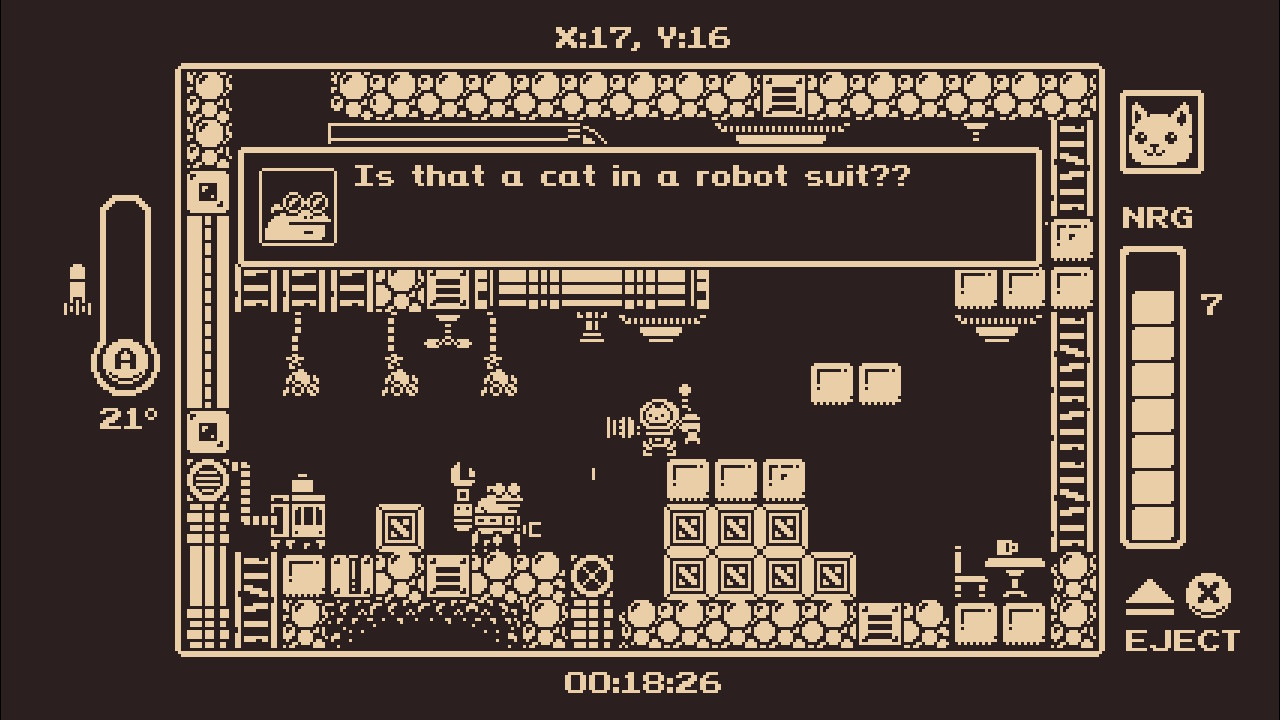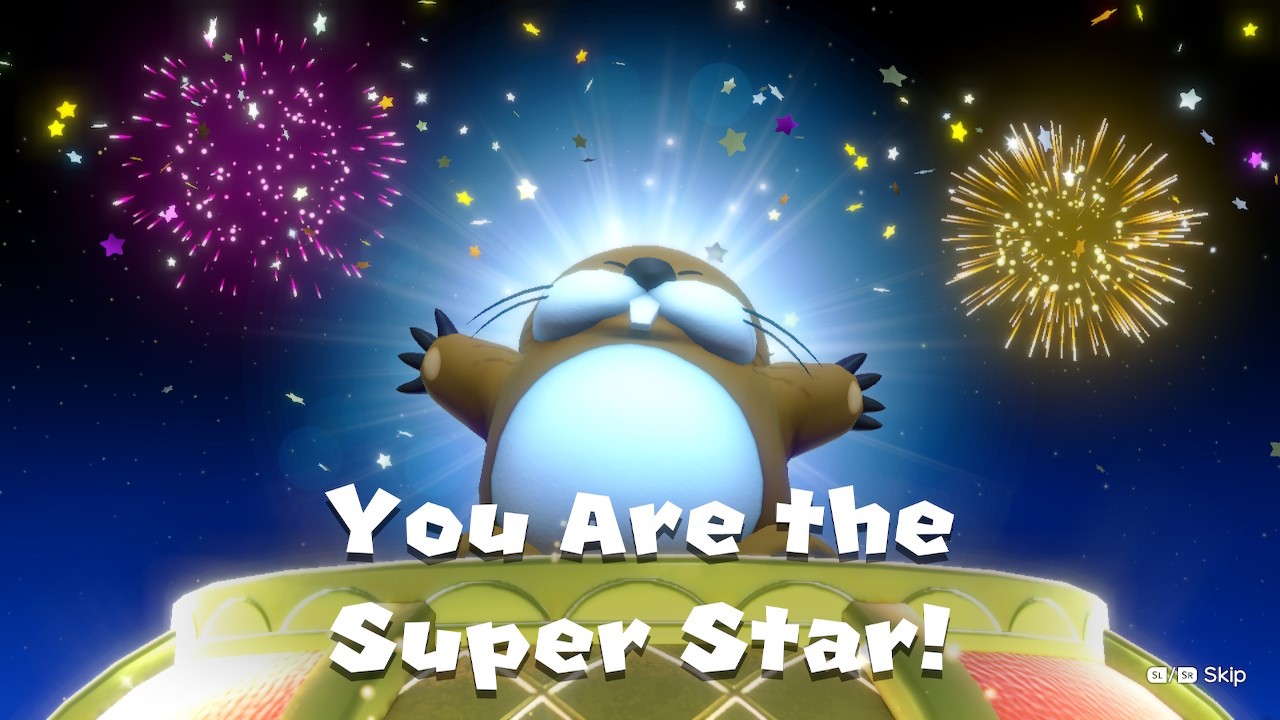Killing several birds with one stone, which is animal abuse at this point
After completing a review, I use a random number generator to select three games for my next article. Player 2 and I then vote for which game we think would be the most entertaining, with Editor One serving as our tiebreaker. Outside of this process, I will review games which I have recently featured in a video, such as Drowning and Fractured Minds. Through this process, I am generally able to review games which interest me.
My system also creates a growing cesspool of games I don’t want to acknowledge. With the more reviews I complete, the more the random number generator is likely to grab these unwanted names. With the really bad games, I haven’t played or thought of them in so long, I’ve forgotten how they play exactly. Only my core hatred of them remains. My Super Bomberman R review took less time writing it than it did replaying it and understanding how updates changed the gameplay. If I had just reviewed the game after I had finished it, the kidney stone would pass so much more easily.
A logical person would change their reviewing system, but I can’t break this arbitrary Rambling tradition. Instead, I will invite you for a closer view into my neurotic tendencies. For this review update/blogitorial, I will touch upon both my past reviews and the games I have yet to review. Through this, if you have been waiting for a particular review, you’ll understand why I’ll never write it.

The Unfinished Games
Normally, I like to have only five “new” games at any one time. It prevents me from overbuying. However, every Black Friday, I will splurge on the sales. I also succumb to consumerism and break my rules from time to time, like I did with Xenoblade Chronicles. Consequently, I’m chiseling at 9 games currently, listed as follows:
- Disgaea 1 Complete
- Lego Marvel Super Heroes 2
- OTTTD
- Pokémon Mystery Dungeon: Rescue Team DX
- Rock of Ages 2: Bigger and Boulder
- Rogue Company
- Stardew Valley
- Turok
- Xenoblade Chronicles Definitive Edition
When reviewing games, it is best practice to start a game, work on it steadily, and complete it before moving onto another. Taking two-month breaks between play sessions, conversely, is like cleaning a car using a cat as a loofah: you can theoretically get the job done, but the process is illogical, ineffective, and infinitely more painful. In eight months, I have devoted three hours a piece to Disgaea 1 and OTTTD. I dislike both of them, so I avoid them in favor of the other games on my to-do list. When I feel guilty enough to play them, I spend 20 minutes re-learning the concept and another 20 making progress before I abandon it again.
Although I will eventually complete both of them, my experience will have been so fragmented that I won’t feel able to give it a proper review. The likes of Astral Chain and Okami (both of which, incidentally, involved Hideki Kamiya) won’t see my front page unless I receive death threats from fans. When that happens, that means I will finally have fans, and I will gladly review both of them.

The Updated Games
As I have mentioned before, I generally dislike DLC, be it free or paid. I would much rather have all the content at once so that I can enjoy it in one serving. When a developer releases DLC post-launch, they essentially shove their game back on my to-do list.
I don’t want to play your game again. Once it’s off the to-do list, I cleanse myself of it, allowing my maiden body to court another game. I wish to stay pure.
As a reviewer, however, I can’t ignore the updates, at least the free ones. The updates could fundamentally change the game. Hell, the Town of Light could actually be playable. Not good, mind you, but playable. If I were to review a game without testing out the changes, I would be publishing a flawed opinion. If content comes out after my review, my review is still fine because it represents an opinion of that game at that time, but to do this, I would have to review games after they comes out. I never do that.
Dead Cells is not the same game I played when I first bought it. One of its 2019 updates decreased the difficulty for your first run, allowing me to beat the game on my first try after tens of failed attempts pre-update, and I haven’t looked back. Other free updates have come out since, and although I have enjoyed the game, I’m not eager to have my ass handed to me. Reviewing the game would require me to complete a few more runs to familiarize myself, which sounds like a lot of work.
Minor updates which don’t drastically impact gameplay – like with Animal Crossing: New Horizons and Human: Fall Flat – don’t require me to replay the game, making them easier to review. I actually look forward to those reviews, diving into how the updates improve or hurt the overall gameplay. Conversely, games like Enter the Gungeon or Hypercharge have changed too much since I last played them and frighten me.

The Boring Ones
There are also those games which are nothing special. Usually, these games score between 6 and 8.5, so they aren’t inherently bad. They just don’t lend themselves to unique review ideas. Assault Android Cactus+ is a great game but makes for a straightforward review. Neurovoider also deserves praise, but I’ve written enough about rogue-lites. Hidden in Plain Sight – another favorite in my house – is so simple that there’s little to write about it.
Take Gato Roboto, a game I have avoided. I’ve randomly rolled it at least four times, but the other games rolled have deserved the review more. Why? Because this is Gato Roboto’s review:
“Gato Roboto is equal parts Metroid and Blaster Master, but you control a cat in a mech suit, which is meme funny. Your mech controls like a bulky Samus, and the cat acts like her morph ball, with some added maneuverability. The cat can wander away from the suit to access new areas but is more vulnerable in this state. You will adventure through a standard Metroidvania map which employs basic yet clean 8-bit graphics. The developers made a competent game which does absolutely nothing new, and you’ll be done with it in three hours. Even if you’ve exhausted all of the other competent Metroidvanias on the Switch, this game won’t give you the fix you need for your apparent genre addiction.”
It’s a throwaway 6.5 game which appeals to a niche group. People don’t need more than 120 words and three pictures to know if they’ll want it. When my average review runs around 1,100 words, only filler and irreverent jokes would fill the extra 980 words to describe Gato Roboto.
Gato Roboto is among a family of games which could be reviewed in a paragraph or two. Stikbold! is your “wacky” local multiplayer party game with a unique gimmick and shallow gameplay. South Park: The Stick of Truth plays like the original Paper Mario but with vulgar humor instead. Hidden Through Time is I, Spy and Where’s Wally. I could describe these games in more detail, but these single-sentence reviews could almost suffice.
Now, I believe that each game deserves a full review because the developers generally worked hard to make a full game. These games just don’t tickle my creative muse. I could do “mini reviews” as other sites have done, but this format seems like a shortcut to lazier writing rather than a way to reinvigorate my writing style. As such, these games will eventually get reviews, but they also may share the fate of Gato Roboto, serving as gimmicks of a larger work.

The Exciting Ones
Roger Ebert remains my favorite critic. He managed to make almost each of his reviews unique and entertaining, and he wrote whatever the hell he wanted to. He wrote a review from the perspective of Garfield, and that’s ballsy, intimidating, and slightly arousing.
My favorite games to review allow me to break from my standard structure. My standard structure exists to organize my key points, allowing my readers to pick which sections interest them. Having a common framework also makes my unique reviews feel that more different. If every review was a Top 10, a break-up letter, or a history of the Mushroom Kingdom, readers would get exhausted. In essence, consistency exists for a reason.
I rarely know which games will lead to interesting reviews, and admittedly, I have not experimented with my review structure as much as I would like. Sometimes, an uninteresting game (like Gato Roboto) can result in a crossover article, and other games can be bunched together to create a larger message. These reviews do tend to be more difficult to write, but they almost always rank among my favorite articles.

The Dreaded Ones
Apart from friends, family, and a few weirdos, I seldom get visitors to my website. My Twitter page is similarly ignored. Despite this, I’m terrified of upsetting potential readers. I don’t tag developers when I post unfavorable reviews. I write excuses in my articles for why my opinions may break from the popular consensus, giving me an out in case someone was offended by what I had said.
The reviews I dislike writing most are for those games which I view as trash but others view as treasure. The saying goes that everyone has an opinion just like everyone has an asshole, but sometimes a certain combination stinks and deserves to remain where the sun doesn’t shine. What if my opinions are odious? What if I’m missing what makes the game good and by publishing my inaccurate review, I’ve exposed my ass to everyone?
Yes, I sometimes do have nightmares about being naked in front of others. Why do you ask?
Wolfenstein II: The New Colossus is a tastelessly offensive FPS which doesn’t know if it wants to ham it up or make grown men cry. It only knows how to be a muddy, straightforward shooter. Warframe delivers gorgeous landscapes and combat animations which help to hide its gameplay which never emerges from its shallow kiddie pool. Pixeljunk Monsters 2 sold its soul and simplicity for fancy new visuals and ungodly load times. Aegis Defenders just sucks outright. Somehow, all of these games are beloved by critics.
For these games to receive a review, we’ll need a small miracle. That could be a random fan specifically requesting for one of these games to be reviewed. A random fan also doesn’t mean you, Mom. I know you’re reading this. Yes, I know you think I’m cool.

A Review of the Reviews Article
Based on my current pace, I won’t be able to write a review for every Switch game before we inevitably move onto the next console. At that point, I’ll pretend the Switch never existed and fawn over whatever underpowered system Nintendo creates next. Having written over sixty reviews, I’ve long since exceeded my expectations for this website. Everything now is just gravy, and if you have any suggestions for gravy, I’ll gladly review it.
Now roll the “Arbitrary Statistics.”

Gato Roboto
Gato Roboto is harmless. It plays exactly as it should and doesn’t aspire to be anything more. Metroidvania fans will have fun with it the same way we enjoy our thousandth game of Spider Solitaire: it’s simple, and we’re mostly playing on auto-pilot. For those looking for an easygoing adventure with a few good boss battles, Gato Roboto may be a good buy. It just won’t ever be a great one.
Arbitrary Statistics:
- Score: 6.5
- Time Played: Over three hours
- Number of Players: 1
- Games Like It on Switch: Blaster Master Zero, Kamiko










